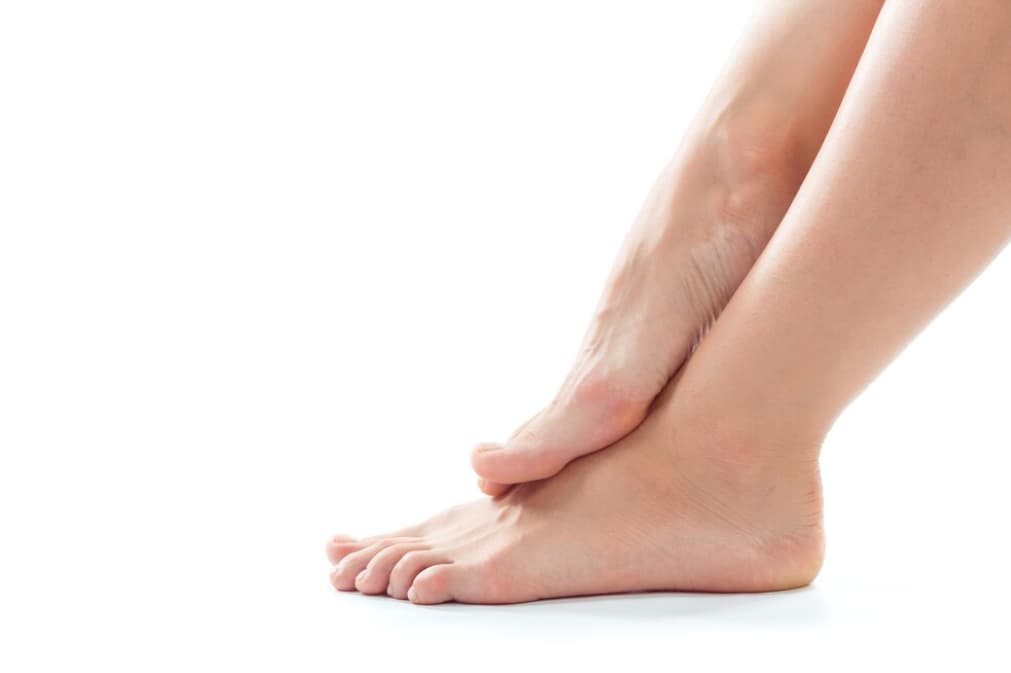Key Questions Addressed in this Article:
- What is capsulitis, and why is it commonly experienced in the joints of the feet, especially the second toe?;
- How does capsulitis affect the body’s joints, and what is the science behind the inflammation of the joint capsule?;
- What are the primary causes and risk factors contributing to the development of capsulitis in individuals?;
- What are the distinctive symptoms that indicate the presence of capsulitis?;
- How is capsulitis diagnosed, and why is it important to consult a podiatrist for an accurate assessment?;
- What are the recommended management and treatment options for effectively dealing with capsulitis?;
- What potential complications can arise from neglecting capsulitis, and how can it affect joint stability and function over time?;
- What is the impact and prevalence of capsulitis on individuals’ daily lives and mobility?;
- What prevention tips can individuals follow to reduce the risk of developing capsulitis?;
- Why is comprehensive care important for individuals suffering from capsulitis, and how can it help prevent future recurrences of the condition?
Understanding Capsulitis
Are you experiencing a sensation akin to walking on a pebble every time you take a step? Or perhaps, the ball of your foot feels as if it is under constant pressure from a hard object? If so, your problem could be capsulitis, a condition our podiatrists frequently encounter. Although capsulitis can strike any joint in the body, it is most prevalent in the second toe.
For those interested in understanding how joint inflammation impacts foot health, such as in the case of capsulitis, you may also find the article on curled toes informative. It explores how changes in foot mechanics due to pain and stiffness can lead to related conditions like curled toes.
The Science Behind Capsulitis
The term ‘capsulitis’ denotes inflammation (‘itis’) of the joint capsule. Each joint in your feet is encapsulated within a protective covering that ensures smooth functioning and proper alignment of the joint. Damage to this capsule results in a painful, swollen joint, often giving the feeling of walking on a small stone. Though commonly seen in feet, capsulitis can affect any part of the body with a joint capsule. Adhesive capsulitis, or frozen shoulder, is a well-known example of capsulitis affecting the upper body.
Causes and Risk Factors of Capsulitis
The root cause of capsulitis, a condition marked by joint pain, is primarily attributed to the excessive stress placed on a joint. This overburdening leads to tissue damage and resultant discomfort. Such stress often stems from faulty foot mechanics or from footwear, like high heels or tight shoes, which unevenly distribute weight onto the forefoot. Additionally, engaging in high-impact activities or having inherent anomalies in foot or toe structure can exacerbate the situation. For example, a longer second metatarsal can increase pressure during walking or running, heightening the risk for capsulitis in the second toe.
Capsulitis tends to affect women between the ages of 30 and 60 more frequently. Your risk of developing this condition might rise if you:
- Work in environments that necessitate frequent tiptoe standing or climbing, or if you spend a lot of time on hard surfaces;
- Experience direct trauma to the joint, such as an upward force applied to the toe in sports activities;
- Suffer from foot irregularities, including bunions, claw toes, or hammertoes;
- Possess tightness in the calf muscles;
- Exhibit instability in the arch of your foot;
- Have forefoot arthritis.
Since the stress each person puts on their feet and joints varies, pinpointing the specific problem through a thorough evaluation is key to devising an effective treatment strategy.
Identifying the Symptoms

Capsulitis typically manifests along with:
- Pain in the affected joint, especially while walking;
- Swelling and warmth;
- Difficulty wearing shoes due to discomfort;
- Redness around the joint;
- Weakness in the area;
- Feeling like you’re walking on a pebble beneath the ball of your foot.
Diagnosing Capsulitis
Your podiatrist can diagnose capsulitis through a physical assessment and examination of the foot in the clinic. In some cases, medical imaging may be required to rule out other causes of foot pain exhibiting similar symptoms but requiring different treatment approaches, such as Morton’s neuroma. Hence, it is crucial not to self-diagnose, as you risk overlooking a serious diagnosis that necessitates a different treatment or urgent care.
Managing and Treating Capsulitis
The key to treating capsulitis is to alleviate the excessive pressure and forces that initially caused the joint injury. A meticulous assessment by a podiatrist is essential to successful treatment, as this enables them to understand all the contributing factors to your injury. Otherwise, you may spend weeks without seeing any improvements due to an incomplete understanding of the problem. Your treatment may include:
- Changing footwear: Switching to shoes that better control foot motion and don’t overload and excessively strain the ball of the foot;
- Offloading the affected joint using custom foot orthotics: These are uniquely designed to effectively redistribute pressure away from the injured joint and distribute it beneath the other joints, significantly relieving pain when walking and aiding the healing process;
- Accelerating joint healing and repair using foot mobilisation therapy: This approach works on stiff or dysfunctional joints to help improve alignment, release tension, and restore better function;
- Temporarily using specially-made pads or strapping to quickly alleviate pain;
- Addressing muscle imbalances (weak/tight muscles) through a custom stretching and strengthening program: Imbalances may contribute to overloading of the forefoot and hence, the development of capsulitis;
- Surgery is not generally recommended for capsulitis.
Ultimately, we aim to deliver top-tier care, and a carefully designed treatment plan tailored to the individual circumstances of each patient. Our podiatrists understand that foot pain is more than just physical discomfort; it severely limits your ability to enjoy life and achieve your goals. All our treatments focus on not only easing your pain but also preventing the problem from recurring in the future. We stay with you every step of the way, providing comprehensive care to help you regain your pain-free life.
Ignoring the Problem: Capsulitis
If left untreated, capsulitis can lead to the destabilisation of the joint, resulting in serious and often irreversible complications. This includes the joint becoming more prominent and, hence, more prone to excess pressure, injury, corns, calluses, and pressure sores. Additionally, the toes might start crossing over one another over time when the joint capsule, responsible for maintaining a healthy alignment, is no longer functioning properly.
Impact and Prevalence of Capsulitis
Capsulitis is more than just a foot discomfort; it’s a pain that can significantly affect a person’s daily life and activities. It can impair mobility and reduce one’s ability to perform basic tasks such as walking, running, or standing for prolonged periods. Understanding its prevalence and impact can help shed light on effective ways to manage and prevent it.
Prevention Tips for Capsulitis

Individuals can prevent capsulitis by wearing supportive shoes that distribute body weight evenly across the foot. Regular foot exercises to strengthen the muscles, maintaining a healthy body weight to reduce pressure on the feet, and seeking early treatment for foot pain are some of the preventive measures. Regular foot checks and assessments can help identify and manage foot abnormalities before they turn into serious condition such as capsulitis.
Frequently Asked Questions
While these terms are often used interchangeably, they refer to different aspects of joint capsule damage. Synovitis is the inflammation of the tissue lining the joint capsule, known as the synovial membrane. This is responsible for producing synovial fluid, which is overproduced in synovitis, leading to added swelling. Capsulitis describes damage to the outer joint capsule, as opposed to its inner lining. The two conditions often coexist.
Conclusion
Understanding the nature and implications of capsulitis is crucial in managing its impact. Being aware of the causes, symptoms, and treatment options can not only help patients navigate their way toward recovery, but it can also assist in the prevention of such painful conditions. Remember, your feet bear the weight of your body daily; giving them the care they deserve is essential for a healthy and active life.
In wrapping up, capsulitis is a painful foot condition that can significantly impact an individual’s quality of life. It is essential to recognize the symptoms early and seek immediate medical attention to prevent any potential complications. With a thorough diagnosis, effective treatment plan, and preventative measures, individuals can manage and overcome capsulitis.


